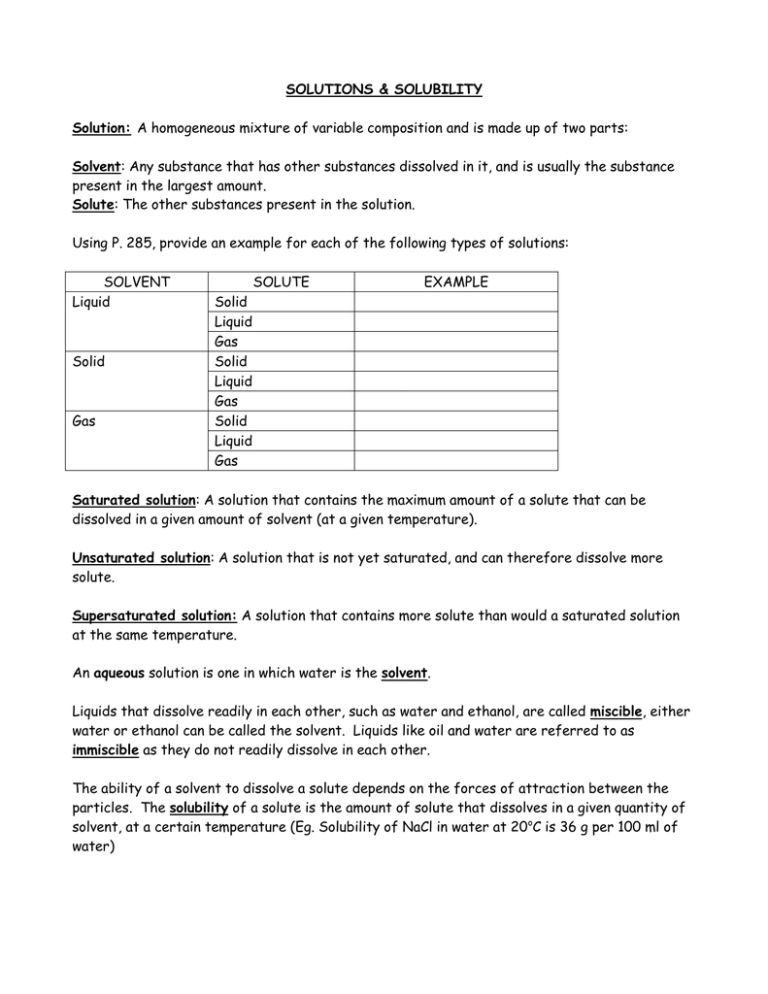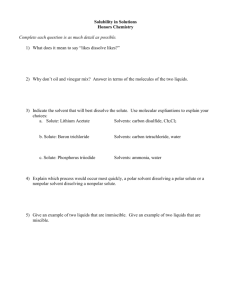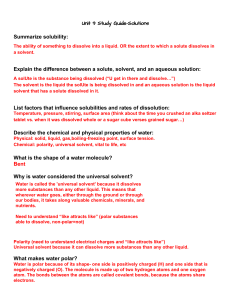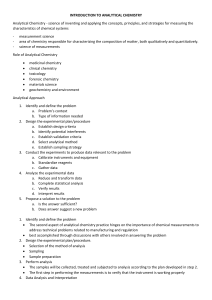SOLUTIONS & SOLUBILITY Solution: Solvent Solute
advertisement

SOLUTIONS & SOLUBILITY Solution: A homogeneous mixture of variable composition and is made up of two parts: Solvent: Any substance that has other substances dissolved in it, and is usually the substance present in the largest amount. Solute: The other substances present in the solution. Using P. 285, provide an example for each of the following types of solutions: SOLVENT Liquid Solid Gas SOLUTE EXAMPLE Solid Liquid Gas Solid Liquid Gas Solid Liquid Gas Saturated solution: A solution that contains the maximum amount of a solute that can be dissolved in a given amount of solvent (at a given temperature). Unsaturated solution: A solution that is not yet saturated, and can therefore dissolve more solute. Supersaturated solution: A solution that contains more solute than would a saturated solution at the same temperature. An aqueous solution is one in which water is the solvent. Liquids that dissolve readily in each other, such as water and ethanol, are called miscible, either water or ethanol can be called the solvent. Liquids like oil and water are referred to as immiscible as they do not readily dissolve in each other. The ability of a solvent to dissolve a solute depends on the forces of attraction between the particles. The solubility of a solute is the amount of solute that dissolves in a given quantity of solvent, at a certain temperature (Eg. Solubility of NaCl in water at 20oC is 36 g per 100 ml of water)






